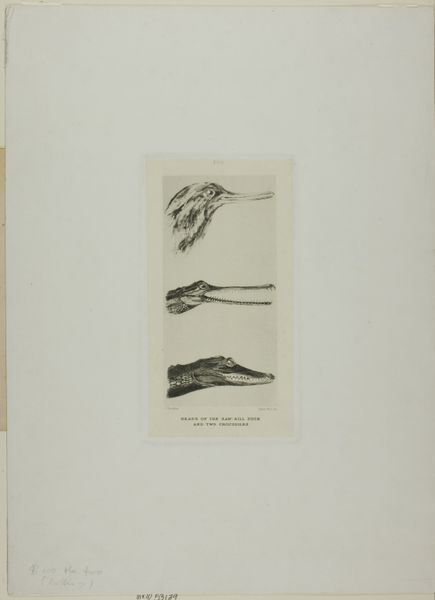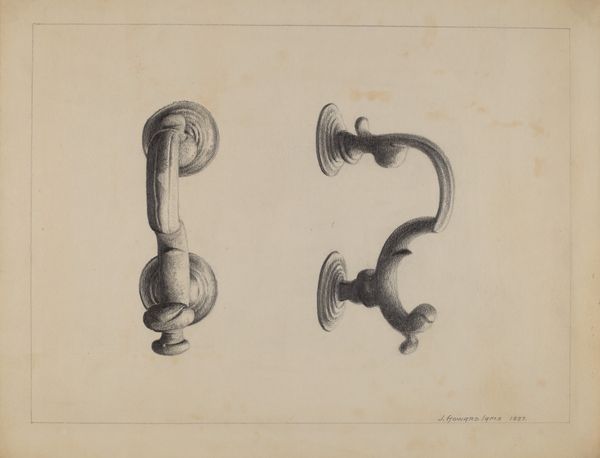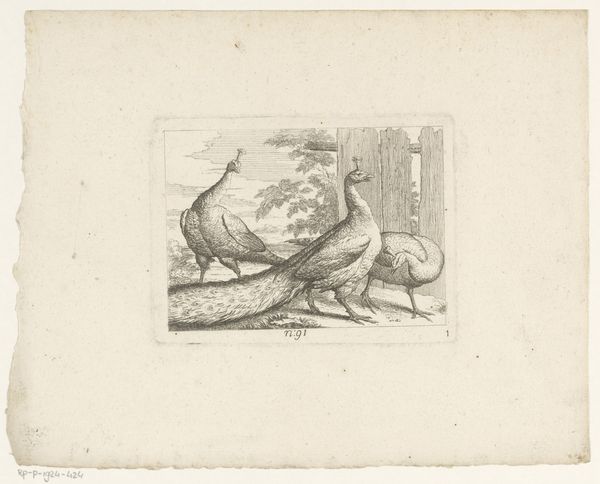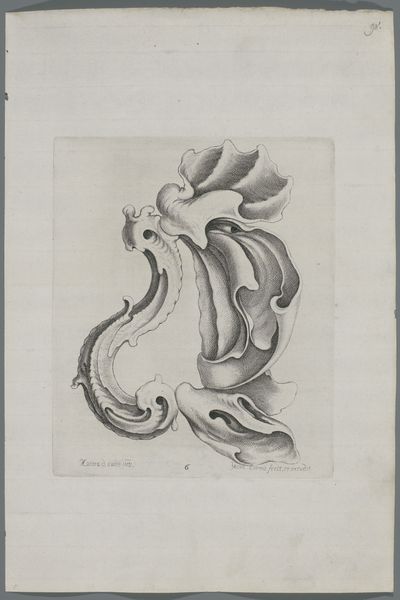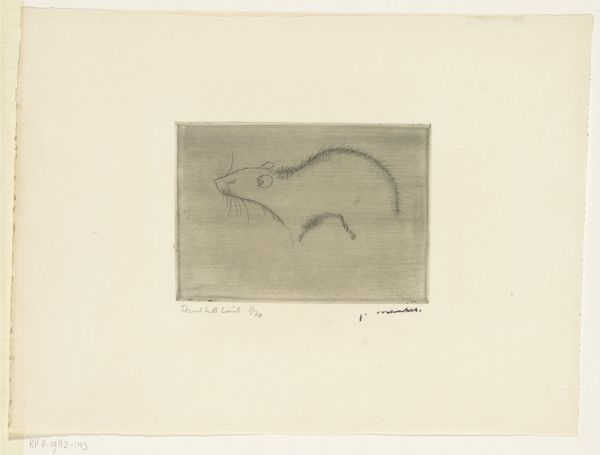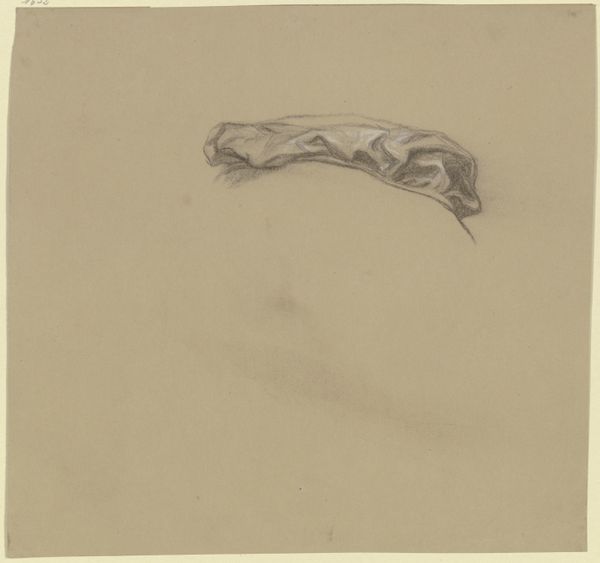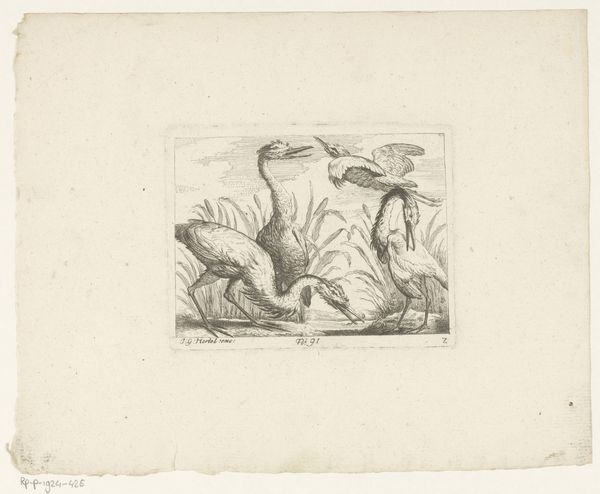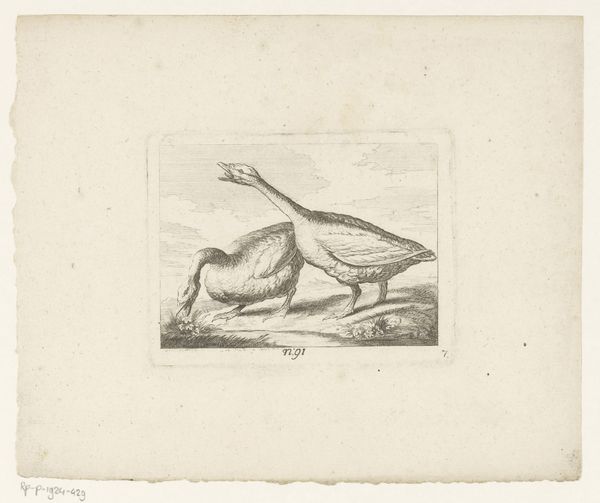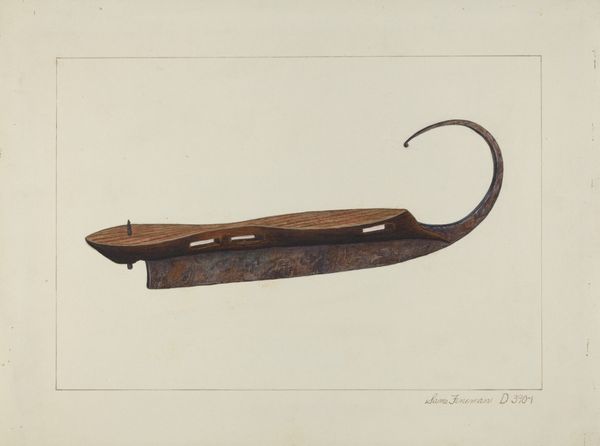
Fossiele beenderen van een oeros, gevonden tijdens de watersnood, 1809 1809 - 1810
0:00
0:00
anthonievandenbos
Rijksmuseum
drawing, pencil
#
drawing
#
pencil sketch
#
pencil
#
academic-art
#
realism
Dimensions: height 196 mm, width 223 mm
Copyright: Rijks Museum: Open Domain
Editor: So this is a pencil drawing titled "Fossil Bones of an Aurochs, Found During the Flood, 1809," created between 1809 and 1810 by Anthonie van den Bos. It's quite stark, just these three carefully rendered bone fragments. What strikes you about this piece? Curator: The drawing itself is an artifact of its time. Consider the materiality: pencil on paper. This was a period where drawing served both artistic and scientific purposes. The very act of sketching these bones— likely sourced directly from the aftermath of the flood—is a form of engaging with raw material. How do you think the artist's labor reflects broader social and scientific trends? Editor: I hadn't thought about it that way! So, the act of sketching is a way of documenting a natural resource impacted by the flood and participating in contemporary scientific pursuits? Curator: Precisely. The "found" bones, the flood, the subsequent act of recording -- each element highlights our complex relationship with natural materials and disasters. Do you see how van den Bos' realism intersects with contemporary practices of scientific classification? Editor: Now that you mention it, it’s easy to think of this drawing in connection with early natural history museums where the classification of animal species would be of great concern. It prompts questions about the social uses of those museums as institutions! Curator: And, implicitly, about resource extraction, ownership, and the means by which that knowledge and collection are accessed and displayed. Consider what's been consumed here: the paper, the graphite, the very body of the Aurochs after a disaster. This quiet image speaks volumes about larger production processes and their consequences. Editor: I am looking at this work through a very different lens now! Thank you, I’ve definitely learned a lot about this piece's production and place within material culture. Curator: A rewarding encounter indeed!
Comments
No comments
Be the first to comment and join the conversation on the ultimate creative platform.

